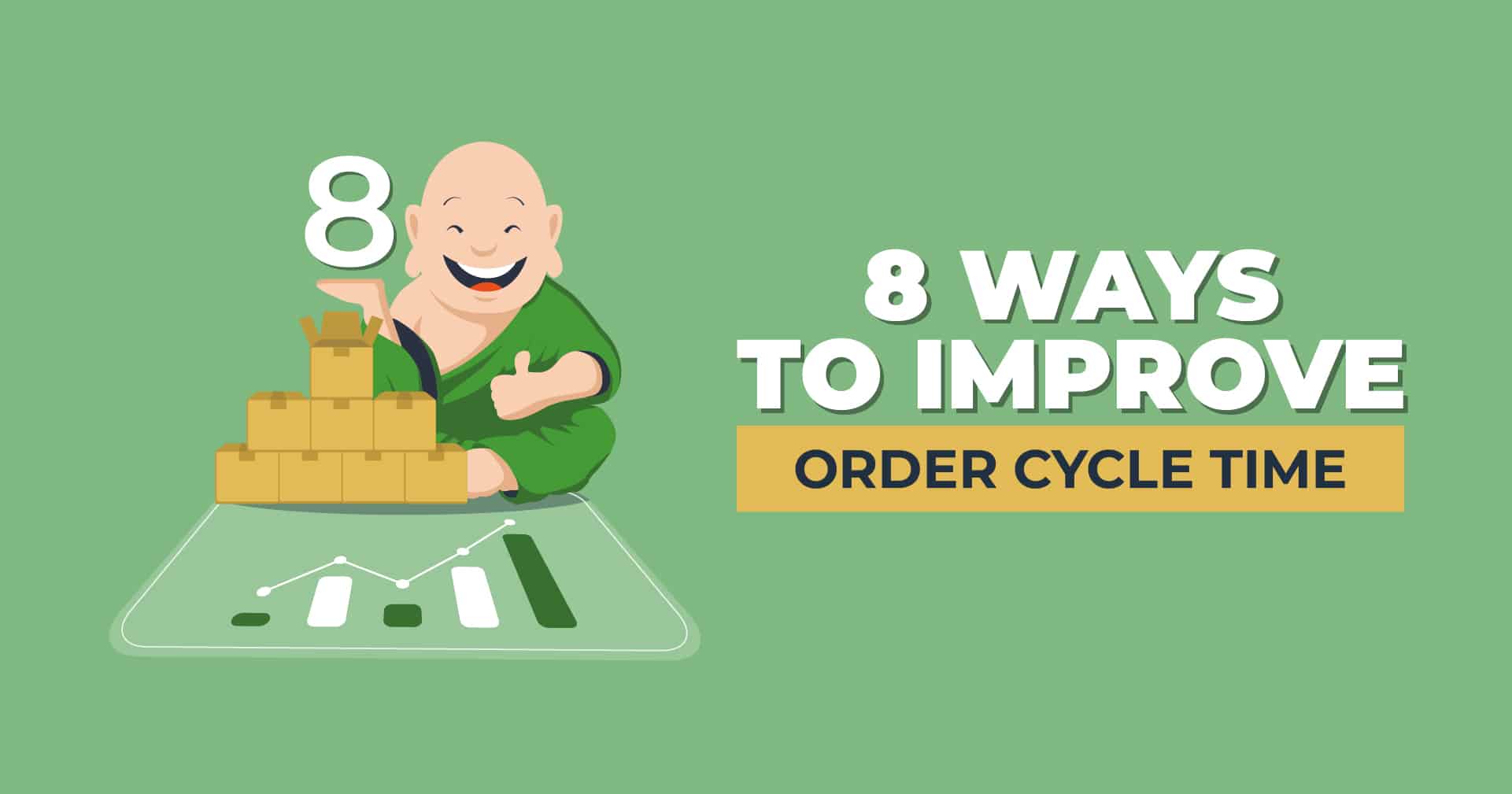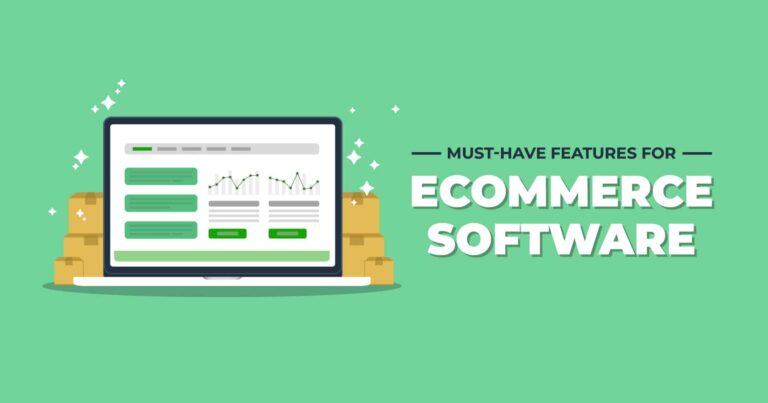8 Ways to Improve Ecommerce Order Cycle Time
When it comes to ecommerce order fulfillment, two of the most important operational factors are speed and accuracy. Whether you manage your own fulfillment operations or partner with a third-party logistics provider (3PL), it’s all about getting orders picked accurately and out the door on time. While both are important in terms of maintaining customer satisfaction, today we’re going to focus on speed — specifically, order cycle time and ways to improve it.
What is Order Cycle Time?
Order cycle time is the time it takes a fulfillment center or 3PL to fill an order, from the time the order is placed to the moment it is handed off to a shipping carrier. Order cycle time is one of several fulfillment-specific Key Performance Indicators (KPIs) used to track the efficiency of fulfillment operations.
Order Cycle Time Formula
To compute average order cycle time over a certain time period, use this formula:
For example, let’s say your fulfillment center is picking and packing orders 8 hours per day and ships 1,000 orders in a typical day, the order cycle time is:
Why is Tracking Order Cycle Time Important?
Order cycle time is a good indicator of how efficient a fulfillment warehouse is. The faster your warehouse or 3PL can fill orders (while maintaining accuracy, of course), the more responsive they can be to spikes in order volume, and the easier it will be to scale your ecommerce business. On the other hand, if new orders are coming in faster than they can fill them, that’s a good indication that order cycle time needs improvement. Tracked over time, changes in order cycle time, for better or worse, can help a warehouse determine which improvements are working and which ones aren’t.
3 Caveats
1.) Order cycle time does not include shipping transit time and last-mile delivery. A different metric, order lead time, tracks the time it takes a customer to physically receive their order after placing it. While lead time is obviously very important to the customer, shipping transit time has little to do with warehouse efficiency and is therefore not a component of order cycle time calculations.
2.) Order cycle time is tracked internally by fulfillment centers and 3PLs, but it varies with order volume from day to day and week to week. As long as the warehouse is keeping up with incoming orders and shipping them out within the expected timeframe, there is little cause for concern. It is important, however, that your fulfillment center has the capacity to ramp up speeds to meet demand. If you know how many orders you can fulfill at top speed, you know how much room for growth you have.
3.) Order cycle time, measured in seconds per order, is strictly an internal metric used by fulfillment centers and 3PLs to track productivity and efficiency. If you manage your own fulfillment center, it is a valuable metric, because all the orders are yours. 3PLs, however, fulfill orders for hundreds of different ecommerce businesses each day. Rather than tracking order cycle time for each individual ecommerce seller, they track overall order cycle time to arrive at an average time per order.
4 Important Components of Order Cycle Time
When calculating order cycle time, the clock starts running the second an online customer taps the buy button. It doesn’t stop until the order reaches the loading dock.
1.) Order transmission — Customers don’t order merchandise from fulfillment centers, they shop on your website, Amazon, Target, Walmart, Instagram, and plenty of other sales channels. Somehow the order needs to get from the shopping platform to the fulfillment center where your inventory is stored. If your fulfillment center is fully integrated, this happens almost instantaneously. Hundreds of orders, coming from multiple channels, marketplaces and shopping platforms can be received at the same time, and prioritized for picking and packing. Manual order entry or lack of integration can slow order cycle time significantly.
2.) Picking — Orders roll in throughout the day and are assigned to pickers, who locate and pull SKUs off the shelves to fill each order. Many factors affect picking speed, from warehouse flow to picking methods, inventory tracking, warehouse automation, and robotics.
3.) Packing — At the packing station, packers select the best box or bag to safely hold all the SKUs in the order and pack the items, using packing materials as needed to prevent damage during transit. A shipping label is applied, and the package is moved to a pallet at the loading dock.
4.) Routing — The last step in the order fulfillment cycle is selecting a shipping carrier (or carriers), and a route that will get the package to the customer most economically within the expected delivery window. If done manually, this process can be time-consuming and error-prone, which is why many self-fulfilling businesses and smaller fulfillment centers stick with one carrier, cross their fingers, and hope for the best. As soon as the shipper has been notified, and the package is at the loading dock, order cycle time is complete.
NOTE: In cases where items are made to order, not kept in stock, order cycle time can take much longer. In these cases, order cycle time includes the time it takes to source the raw materials and manufacture the item according to the customer’s chosen specs.
8 Ways to Improve Order Cycle Time
If a fulfillment center is falling behind on orders or wants to make improvements so it can process more orders per day, there are many levers to pull that can make a difference.
1.) Eliminate Paper and Manual Data Entry — Eliminate paper (pick lists, packing slips, invoices, freight manifests) wherever it exists, and you’ll eliminate delays caused by lost or misplaced paperwork. Eliminate manual data entry (spreadsheets, manual order entry, manual receiving processes) and you’ll reduce human errors that can quickly clog up the system.
2.) Inventory Management System — If frequent stockouts and backorders are slowing your average order cycle time, it may be time to upgrade your inventory management system to one that allows you to track orders and inventory levels in real time. Advanced systems can help you calculate economic order quantity (EOQ), a formula that tells you when and how much to order. Reorder points can be set to automatically notify you when inventory reaches a certain level.
3.) Supply Chain — Stockouts may also be caused by supply chain issues. Switching suppliers, manufacturers, or freight shipping companies may solve this problem, but being aware of and planning for extended lead times is critical. Safety stock levels should be evaluated regularly and updated as often as necessary.
4.) Warehouse Flow — Consider the path orders take as they flow through your warehouse. Are there bottlenecks, or dangerous crossings that could be eliminated by moving things around? Is there a faster way to get filled orders to the packing stations? Can you automate certain aspects of your receiving process to get merchandise on the shelves faster? And how are you handling returns? Keeping returned merchandise in a dedicated area until it can be examined, sorted, repackaged, and reshelved can reduce confusion and mis-picks.
5.) Tracking System — Invest in a digital tracking system that uses barcodes and multiple checkpoints to track merchandise throughout the warehouse, from receiving to shipping. This not only reduces errors caused by incorrect slotting and mis-picks, it also provides the data for real-time inventory management.
6.) Slotting — Think about moving merchandise to a different bin or bay to reduce errors and save steps. For example, similar looking items slotted right next to each other can cause confusion that slows pick times and a higher likelihood of pick errors. Frequently ordered SKUs should be easy to get to. If certain items are always ordered together, consider kitting (pre-packaging) these items and/or combining them under a new SKU to save time when picking.
7.) Picking Methods — Reduce picking time by assigning pickers to certain areas of the warehouse, or batching orders with the same SKUs together so they can be picked at the same time. The larger your fulfillment operation, the more effective batch or wave picking can be at reducing order cycle time.
8.) Automation — Modernized fulfillment centers invest in technologies that streamline the fulfillment process and prevent errors. Address verification systems automatically detect incorrect addresses and flag them for follow-up with the customer before the order is filled. Items and packages are scanned at quality control checkpoints to ensure the correct items go in each order, and that the package gets loaded on the correct truck. Other scanning machines automatically calculate the size and weight of each item and recommend the best size box or bag for shipping it economically. Robotics, conveyor belts, and sorting machines move packages and bins around to save steps, improve accuracy, and speed up the process.
Or You Can Partner with a 3PL
At some point in the life of a growing ecommerce business, you have to get serious about scaling your fulfillment operations or find someone who can do it for you. Because scaling requires significant investment in warehouse space, staff, technology, and automation, most ecommerce businesses choose to outsource. Here are just a few of the benefits of working with a tech-forward 3PL like ShipMonk.
Seamless Technology Integrations — ShipMonk works with clients of all sizes, across all verticals. Our 3PL serves DTC ecommerce brands, subscription box companies, and brands seeking B2B retail distribution and omnichannel fulfillment. ShipMonk software supports seamless integration with various third-party applications and partners including Gorgias, Linnworks, SPS Commerce and Happy Returns. No matter where you’re starting from or where you want to go, ShipMonk can hook you up with the right systems.
Powerful Order, Inventory, and Warehouse Management System — You’ll find a broad range of software in use in the fulfillment industry, from the most basic to the most advanced. ShipMonk’s advanced 3PL fulfillment software platform offers a cloud-based order, inventory, and warehouse management system that helps ecommerce businesses streamline shipping and order fulfillment via a unified portal. Orders coming from multiple sales channels are prioritized and routed, while inventory distributed across multiple fulfillment centers can be tracked and managed in real time. This first-of-its-kind platform offers a user-friendly “one-stop shop” for every 3PL resource, taking the guesswork out of managing the different layers of your operation.
Automation and Robotics — ShipMonk’s state-of-the-art fulfillment centers are built for efficiency from the ground up, taking advantage of automation and robotics wherever it makes sense to create efficiencies and reduce errors. Our commitment to ongoing process improvements means you can take advantage of the best the industry has to offer without having to think about it.
Same-day Fulfillment — Because 3PLs operate at a different speed, they may be able to guarantee that orders will be fulfilled the same day they’re received. This enables their ecommerce clients to shorten lead times and offer expedited shipping to their customers.
Special Services — At ShipMonk, ecommerce brands can take advantage of special services like sales channel management, analytics, kitting, shipping management, forecasting, flash sales, and Amazon FBA preparation services.
Multiple Warehouse Locations — ShipMonk employs 2,000+ team members across 11 state-of-the-art facilities in the US, Canada, Mexico, and Europe. By distributing inventory across multiple warehouse locations, ecommerce brands can shorten shipping distances, reduce costs, and offer their customers 2-day delivery to virtually any location in the U.S.
Multiple Shipping Options — A 3PL that ships thousands of packages per day and partners with all major global, national, and local shipping carriers has superior options and much more data to work with when routing an order for delivery. For example, ShipMonk’s first-of-its-kind carrier-agnostic Virtual Carrier Network (VCN) ensures our ecommerce merchants aren’t handcuffed to any single carrier, while offering an assortment of service levels. Each order is automatically routed the most efficient way, based on its size, weight, destination, and speed. The shipper is automatically notified for pickup, and a shipping label is automatically generated.
Is it Time to Improve Your Order Cycle Time?
By now you should know that if your ecommerce fulfillment operations aren’t keeping pace with your orders, the first metric you should examine is your order cycle time. The solution may require improvements to your supply chain, inventory management capabilities, warehouse layout, systems and processes — or all of the above.
If this seems like too much to handle, the fulfillment experts at ShipMonk are happy to help. Our DTC, B2B, and retail clients don’t have to worry about order cycle time, because they know we’re working on improving it every day. Contact us today!



